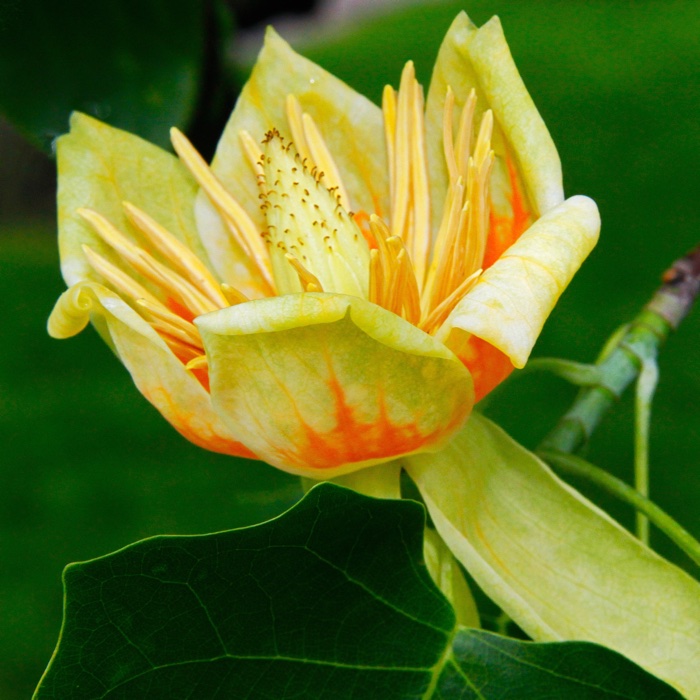Botanical collection

Lyriodendron or Tulip Tree
Common name: Lyriodendron or Tulip Tree
Latin name: Liriodendron tulipifera ‘Fastigiata’
Family: Magnoliaceae
Origin: Canada and the eastern United States
Features:
The name comes from its beautiful cup blooms, similar to tulips, which can reach over 6 centimetres in diameter. The word léirion in Greek means “lily” and déndron “tree.” Deciduous tree of first magnitude, can exceed 30 m of height, at medium growth speed, columnar bearing and erect trunk. The leaves, unmistakable and very original shape, are coarsely square and palmate, with four pointed lobes and a truncated apex.
In spring and summer they have a soft green colour, darker on the top, while in autumn they acquire an intense golden-yellow. The flowers appear in summer, usually in June-July, are green-yellow, about 5 centimetres long, have a cup shape and are similar to tulips, from which derives the vulgar name ‘tulip tree’. C.
The bark is grey-green when young and then takes on a rough and cracked appearance with age. Imported in 1700, it is a tree very cultivated and appreciated in parks, avenues and city gardens for the particular appearance of the leaves, flowers and autumnal colour. It likes sunny positions and soils that tend to be acidic, fresh and well-drained, not calcareous. Moderately resistant to drought, salinity and water stagnation.
Curiosity: the tulip tree wood was used by Native Americans to make canoes.
Selezione per il parco: low deck plant; trunk circumference 30- 35 cm; height 7- 8 metres.
Botanical information powered by AG&P
See on the map